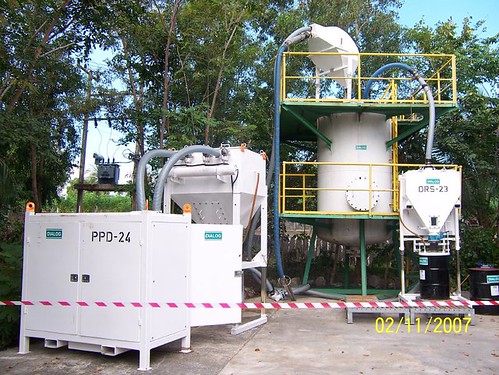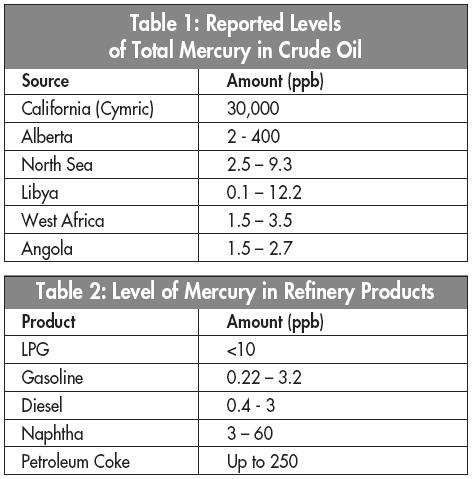Johnson Matthey Catalyst (JMC) and Dialog have organized The 2nd Mercury Technical Seminar in Pattaya, Thailand after their success story in the 1st Mercury Technical Seminar, 2005. The seminar covers paper presentation on the first day and demonstration of catalyst loading and unloading processes on second day.
There are about 206 participants mainly from oil and gas field such as PTTEP, Chevron, Technip, ConocoPhilips, Petronas, etc have attended this event. Experts from JMC, Intertek, C-Chec, Peco, Chevron and Mercury Technology Services have presented few papers. The papers include :
- Overview of mercury in Oil & Gas and its development
- Mercury removal technologies overview
- Pre & Post treatment - Filtration
- Protecting Petrochemical Plant from Mercury
- Mercury Sampling & Testing
- New technology – Mercury removal in liquid hydrocarbon
- Research & Development – future technologies
There are number of interesting points that I managed to capture which I think is rather important and crucial.
The following table presented mercury level for several crude & refinery product :
Present of mercury has reduced the crude / condensate price. JMC has developed and marketed it mercury removal in liquid hydrocarbon unit. Removal of mercury in liquid will definitely benefit the crude and condensate exporter by increasing the unit price.
ii) Intertek has conducted research in sampling and testing. They found that, mercury potentially adsorbed on the sampling bottle (glass) which may not be removed by simple solution rinsing. It needs to be extracted. The quantity of mercury shall be the tested medium reading plus extracted reading. This implies that those past laboratory testing results are under estimated the actual mercury content and shall be UPDATED.
iii) Second finding shown by Intertek is several samples collected at the same period from same sampling location showing different adsorption rate at the glass collection pot. This has created problem in bench marking mercury adsorbed on the glass pot. Intertek has used Teflon lined sampling pot which has more-less adsorbed mercury level.
iv) JMC has some break-through in mercury removal in aqueous system i.e. produced water and it is expected to be launched in the market next year. This no doubt is an great news to main oil and gas producer as there are having difficulties in disposing the produced and condensed water which contaminated with mercury.
The second day was the demonstration of catalyst loading and unloading process. See below image for the entire system.

The following video clip shows catalyst LOADING process. (Click to view)
The following video clip shows catalyst UNLOADING process. (Click to view)
Further Reading :
i) In the past, there are a lot of success story in removal of mercury in Gas phase. Examples are Mercury removal unit (MRU) in Bongkot North, Pailin, Arthit field, etc. However, mercury removal in condensate (liquid hydrocarbon) and produced water are still yet to be developed. Generally the mercury will be send together with condensate and crude to onshore refinery for further treatment. This has reduced the crude / condensate price.
The following table presented mercury level for several crude & refinery product :
Present of mercury has reduced the crude / condensate price. JMC has developed and marketed it mercury removal in liquid hydrocarbon unit. Removal of mercury in liquid will definitely benefit the crude and condensate exporter by increasing the unit price.
ii) Intertek has conducted research in sampling and testing. They found that, mercury potentially adsorbed on the sampling bottle (glass) which may not be removed by simple solution rinsing. It needs to be extracted. The quantity of mercury shall be the tested medium reading plus extracted reading. This implies that those past laboratory testing results are under estimated the actual mercury content and shall be UPDATED.
iii) Second finding shown by Intertek is several samples collected at the same period from same sampling location showing different adsorption rate at the glass collection pot. This has created problem in bench marking mercury adsorbed on the glass pot. Intertek has used Teflon lined sampling pot which has more-less adsorbed mercury level.
iv) JMC has some break-through in mercury removal in aqueous system i.e. produced water and it is expected to be launched in the market next year. This no doubt is an great news to main oil and gas producer as there are having difficulties in disposing the produced and condensed water which contaminated with mercury.
The second day was the demonstration of catalyst loading and unloading process. See below image for the entire system.

The following video clip shows catalyst LOADING process. (Click to view)
The following video clip shows catalyst UNLOADING process. (Click to view)
This seminar has provided me with market updates, new findings & technologies related to mercury removal, knowledge improvements, etc as well as some hands-on experience. You are encourage to participate in next Mercury Technical Seminar which probably will be held on 2009.


No comments:
Post a Comment